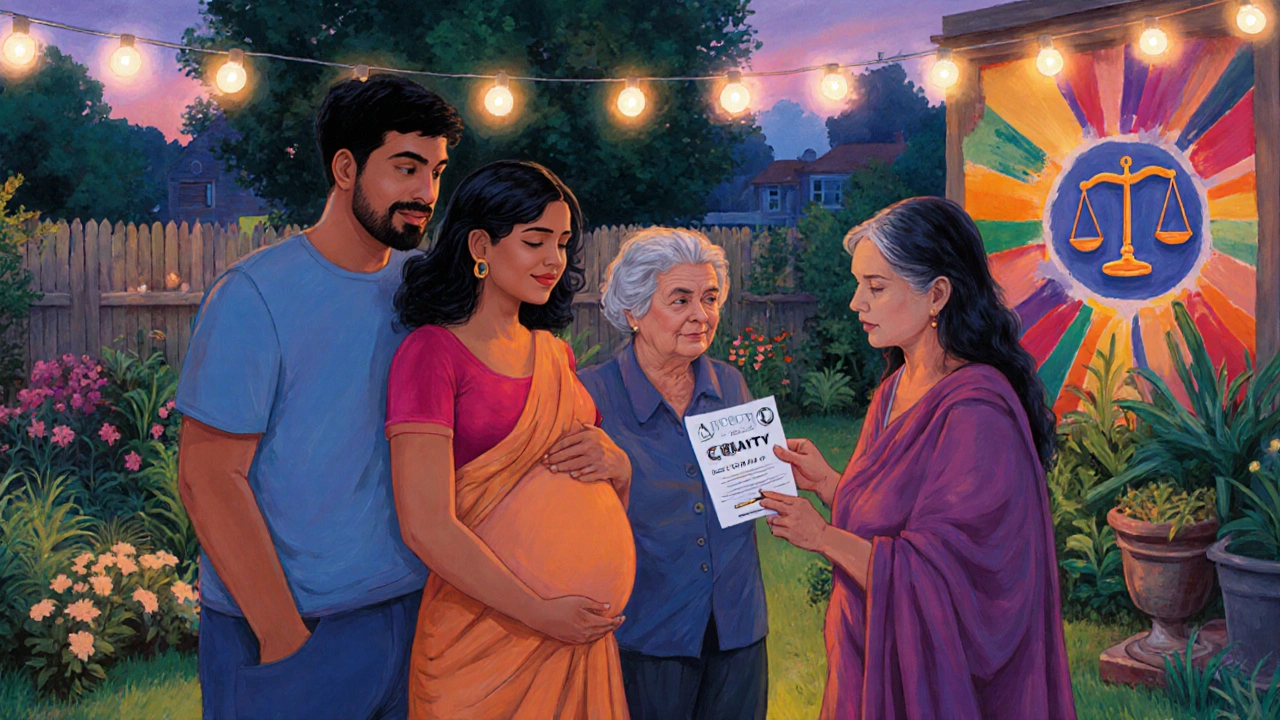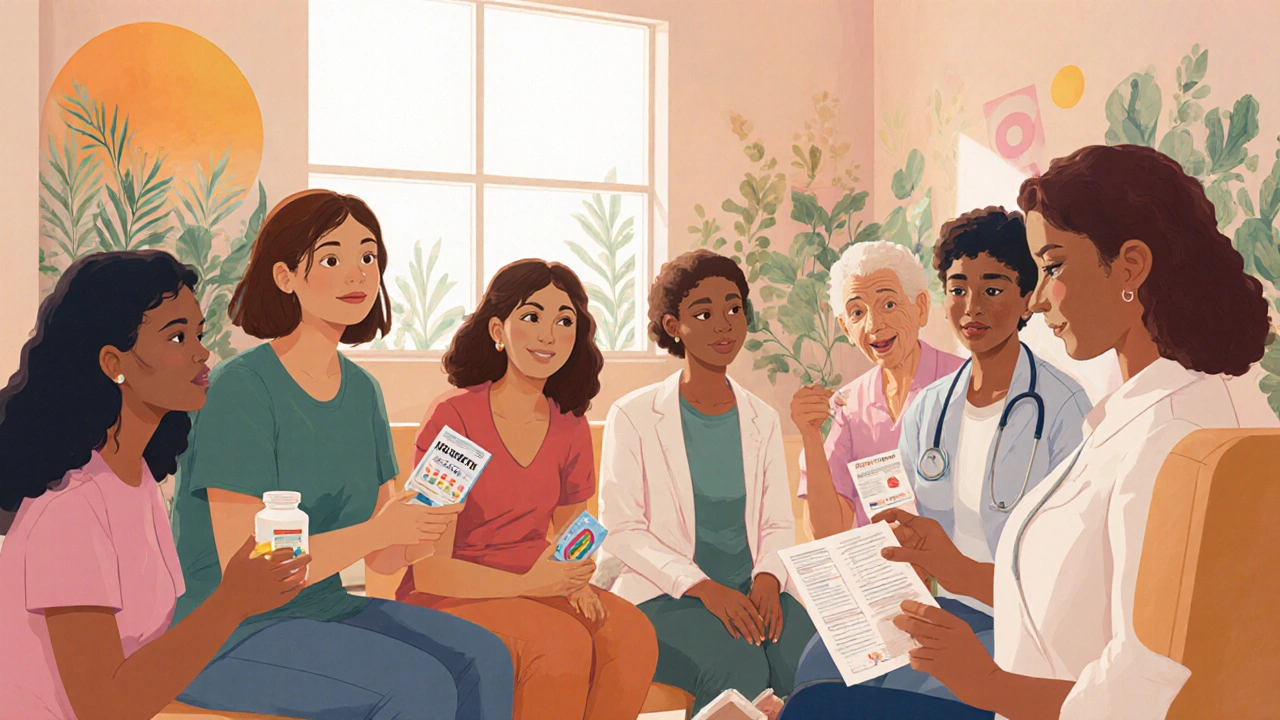Key Takeaways
- Reproductive justice expands the conversation beyond "choice" to include social, economic, and health equity.
- Access to contraception, comprehensive sex education, and safe abortion services are core pillars.
- Policy reforms and community‑driven programs work best when they intersect.
- Data shows that jurisdictions that adopt a justice‑oriented framework see a 30% drop in unwanted pregnancy rates.
When you hear the phrase reproductive justice, you might picture a legal battle over abortion. The truth is broader: it’s a rights‑based framework that links bodily autonomy to the social conditions that make a pregnancy wanted-or not. Below we unpack how that approach reshapes the fight against unwanted pregnancies.
What is Reproductive Justice?
Reproductive justice is a human‑rights framework that combines the right to have children, the right not to have children, and the right to parent children in safe, healthy environments. It was coined in 1994 by women of color’s advocacy groups who felt existing feminist and pro‑life narratives ignored race, class, and disability.
The model rests on three intersecting pillars: (1) bodily autonomy, (2) health equity, and (3) socio‑economic justice. By addressing each pillar, the movement tackles the root causes of unwanted pregnancies rather than merely treating the outcome.
How Reproductive Justice Addresses Unwanted Pregnancies
Unwanted pregnancy is rarely a single‑cause event. It emerges where contraceptive access is limited, sex education is absent, and structural barriers block safe health services. A justice‑focused strategy therefore attacks the problem on three fronts:
- Contraception access is the provision of affordable, culturally appropriate birth‑control methods through pharmacies, clinics, and community programs.
- Comprehensive sex education is curricula that cover anatomy, consent, LGBTQ+ health, and practical contraceptive use, delivered in schools and community centers.
- Abortion rights are legal and logistical safeguards that ensure safe, timely termination services for those who need them.
When these pillars are aligned, data from the Guttmacher Institute shows a 25‑30% reduction in unintended birth rates within five years of implementation.
Core Pillars in Detail
Contraception Access
Barriers to contraception often stem from cost, stigma, and geographic deserts. Policies that subsidize pills, injectables, and long‑acting reversible contraceptives (LARCs) can cut unintended pregnancy rates dramatically. For example, the state of Colorado’s Medicaid expansion for LARCs lowered teen pregnancy by 12% in three years.
Comprehensive Sex Education
Studies from UNESCO confirm that students who receive medically accurate sex education are twice as likely to use contraception consistently. Programs that involve parents and address cultural norms outperform siloed classroom lessons.
Abortion Rights
When safe abortion services are unavailable, people turn to unsafe methods, increasing maternal morbidity. Countries with liberal abortion laws and robust public funding report maternal mortality rates 40% lower than those with restrictive policies.
Health Equity
Health equity is the fair distribution of health resources regardless of race, income, gender identity, or geography. Without equity, the other pillars cannot reach marginalized groups. Initiatives that embed community health workers in low‑income neighborhoods have shown a 15% dip in unintended births.

Policy Landscape: What Works Where?
| Aspect | Legal Frameworks | Community Programs |
|---|---|---|
| Scope | State or national statutes governing contraception subsidies, abortion access, and sex‑ed curricula. | Grassroots initiatives delivering free condoms, peer‑led workshops, and mobile clinics. |
| Primary Target | Broad population, with emphasis on statutory compliance. | Underserved groups-low‑income, rural, and LGBTQ+ youth. |
| Funding Source | Government budgets, often tied to Medicaid or public health grants. | Non‑profits, foundations, and local fundraising. |
| Effectiveness (unwanted pregnancy reduction) | Average 18% decline after 3‑year implementation. | Average 22% decline when paired with legal reforms. |
| Challenges | Political pushback, enforcement lag. | Sustainability, scaling beyond pilot sites. |
The table shows that combining top‑down policy with bottom‑up community work yields the biggest impact. Policymakers should therefore allocate resources to support local organizations that already have trust within their communities.
Community‑Driven Strategies that Deliver
Even the best laws fall flat if people can’t or won’t use them. Community health workers (community health workers are trained locals who provide health education, referrals, and basic services in their neighborhoods) act as bridges. Their tasks include:
- Distributing free contraceptive kits at churches, libraries, and housing projects.
- Running “Ask‑Me‑Anything” sessions on sexual health that respect cultural sensitivities.
- Helping patients navigate insurance or funding for abortion services.
When a pilot in Detroit paired CHWs with a Medicaid contraceptive subsidy, the city saw a 14% drop in teen births over two years.
Common Pitfalls and How to Avoid Them
Implementers often stumble on three recurring issues:
- One‑size‑fits‑all messaging. A curriculum designed for suburban schools may alienate rural youth. Tailor content to local norms while keeping medical accuracy.
- Funding silos. Grants that fund only contraception or only education create gaps. Pursue integrated funding streams that cover the full justice bundle.
- Lack of data feedback. Without real‑time monitoring, programs can’t adjust. Use simple surveys and community dashboards to track pregnancy rates, service uptake, and satisfaction.
By anticipating these hurdles, agencies can keep momentum and sustain impact.
Next Steps for Advocates, Providers, and Policymakers
Whether you’re a community organizer, a clinic director, or a city council member, you can move the needle:
- Map local barriers. Identify where contraception, education, or safe abortion services are missing.
- Build coalitions. Partner schools, faith groups, and NGOs to amplify messaging and share resources.
- Push for legislation that funds the whole bundle. Advocate for state budgets that cover LARC subsidies, comprehensive curricula, and Medicaid abortion coverage.
- Invest in data. Track metrics like unintended pregnancy rates, contraceptive uptake, and patient satisfaction to demonstrate ROI.
When all three pillars click, unwanted pregnancies drop, maternal health improves, and families regain control over their futures.

Frequently Asked Questions
What exactly does "reproductive justice" mean?
It is a rights‑based framework that guarantees the ability to decide if, when, and how to have children, while also demanding safe, supportive environments for parenting. It ties bodily autonomy to economic, racial, and health equity.
How does contraceptive access lower unwanted pregnancy rates?
When people can obtain affordable, reliable birth‑control methods without stigma or travel, they are far more likely to use them consistently. Studies show a 25‑30% cut in unintended births after large‑scale subsidized LARC programs.
Is comprehensive sex education really effective?
Yes. Research from UNESCO and CDC demonstrates that students who receive medically accurate, inclusive sex education have higher contraceptive use rates and lower rates of unintended pregnancy.
What role do community health workers play in reproductive justice?
They act as trusted messengers, delivering contraceptives, providing education, and linking people to safe abortion services. Their local insight helps tailor programs to cultural contexts.
Can legal reforms alone solve the problem?
Legal reforms are essential but insufficient on their own. Without community outreach, affordable services, and culturally competent education, laws often fail to reach the people who need them most.
